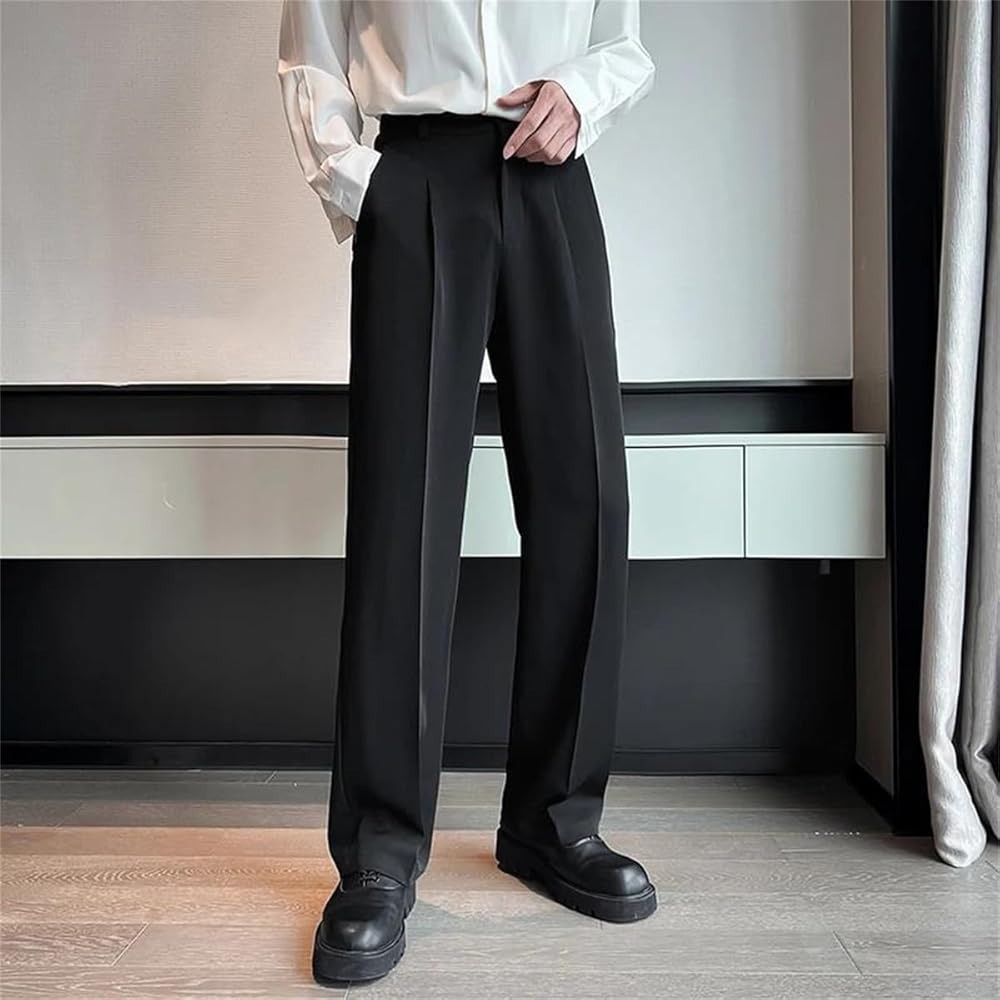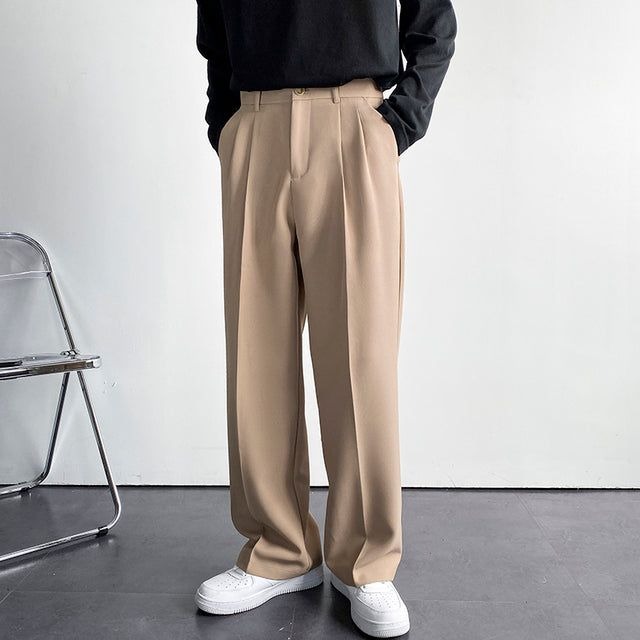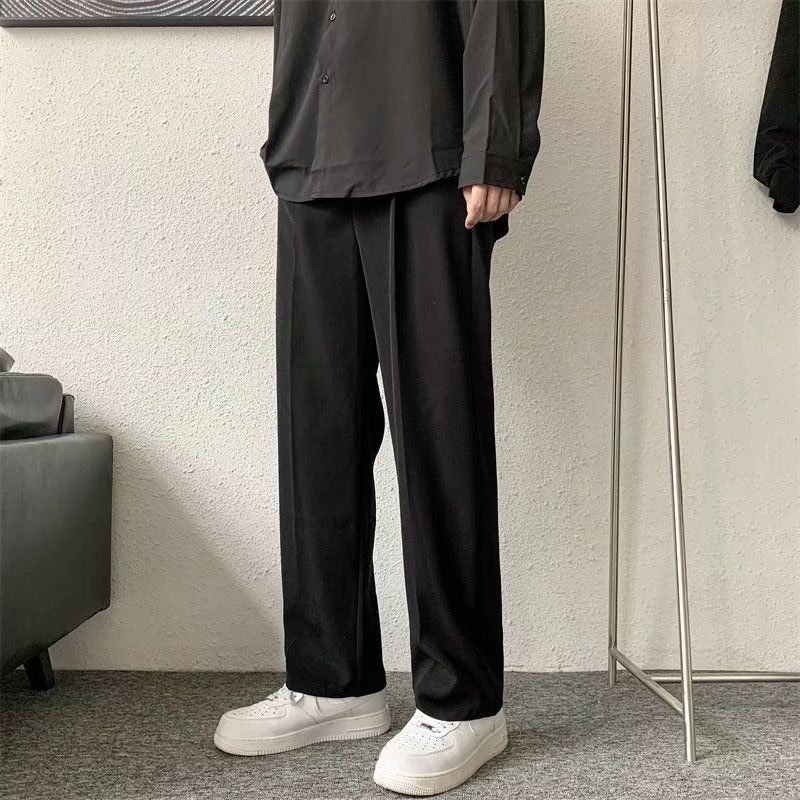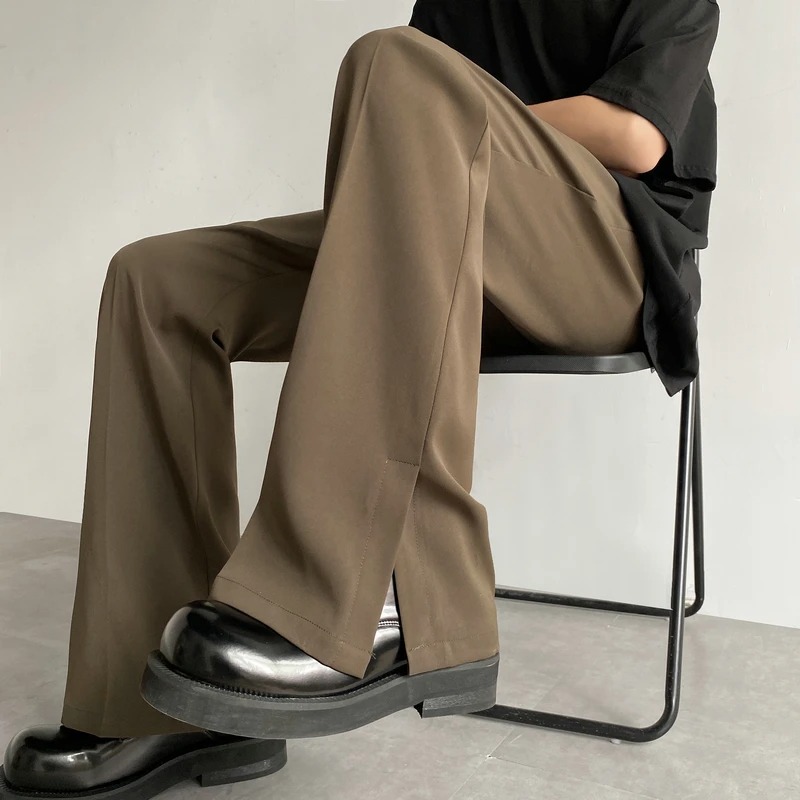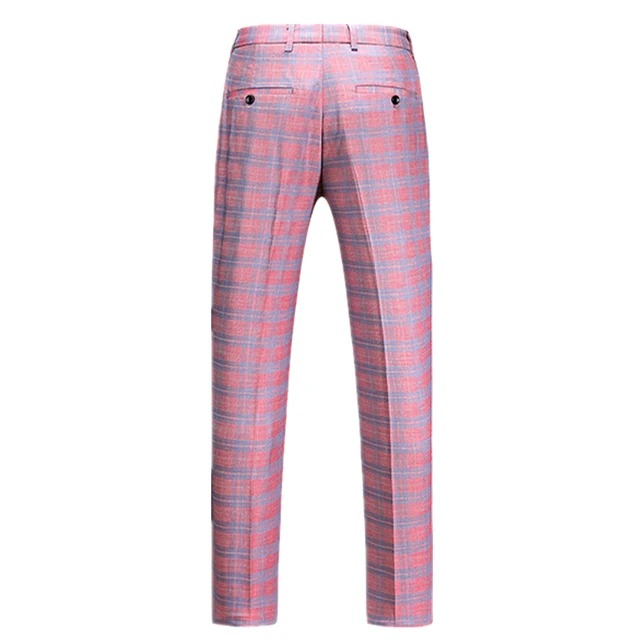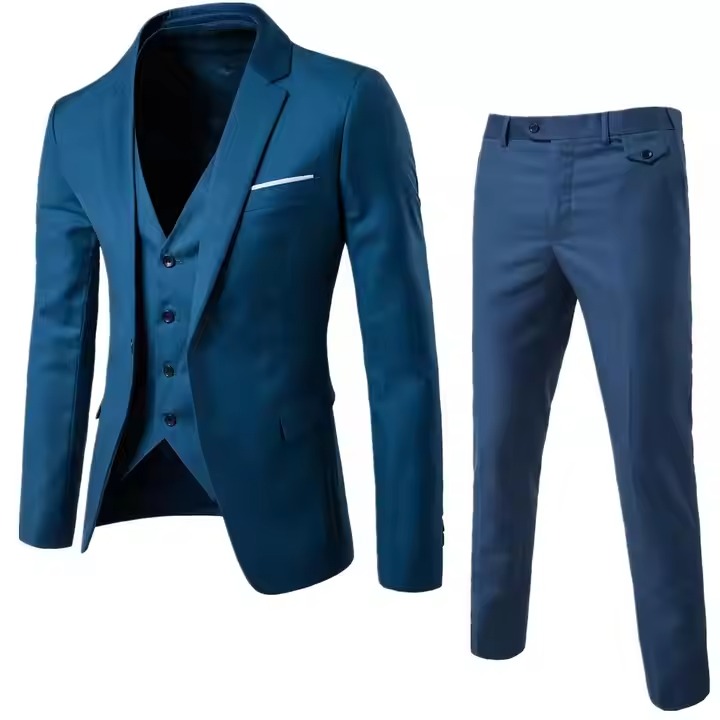Preparing Your Suit Pants for Ironing
How to iron suit pants? Before we dive into the step-by-step process of ironing suit pants, it is essential to prepare your pants and workspace. Proper preparation will not only make the ironing process smoother, but it will also help you achieve the best possible results. Here’s how to get started.
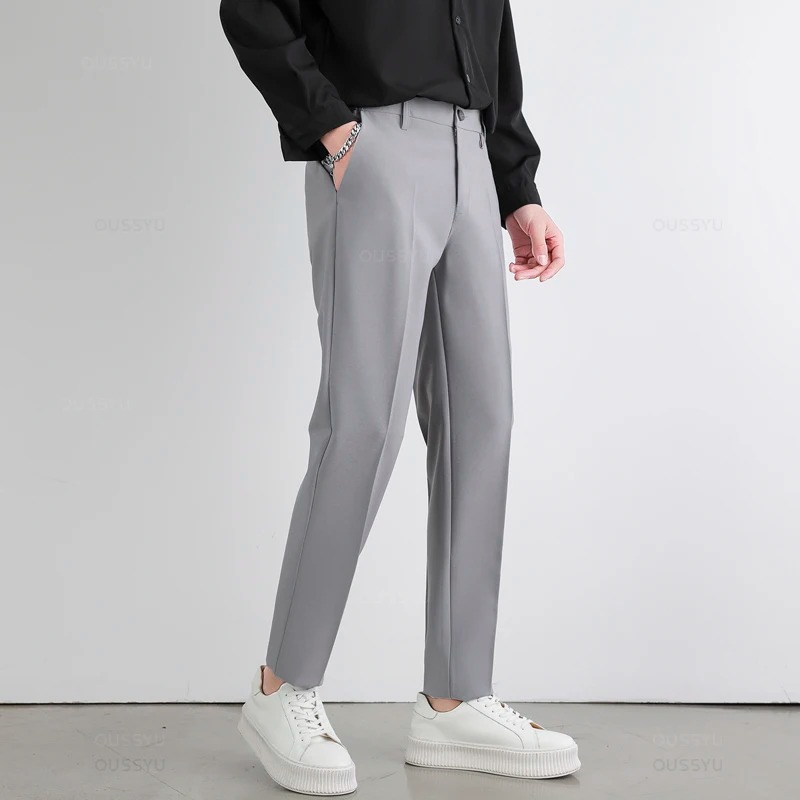
Gather Necessary Equipment
To iron suit pants effectively, you need the right tools. Make sure to have the following items on hand:
- A reliable iron: Look for one with adjustable temperature settings.
- An ironing board: A sturdy board provides a flat surface for easy ironing.
- A pressing cloth: This protects the fabric from direct heat, which is crucial for delicate materials.
- Distilled water: If your iron has a steam function, use distilled water to prevent mineral buildup.
By gathering these essential tools, you’ll ensure that you’re equipped for the task at hand.
Inspect for Any Stains or Damage
Before heating up your iron, inspect your suit pants carefully. Check for any stains or areas of damage:
- Stains need treating before ironing to avoid setting them permanently.
- Ensure there’s no existing damage that could worsen with ironing.
- Address any loose threads or buttons to prevent further issues.
By inspecting your suit pants first, you can avoid mishaps during ironing and maintain your garment’s integrity. Once you have checked for stains and damage and you have your equipment ready, you’re all set to start ironing your suit pants.
The Correct Iron Temperature for Different Fabrics
Choosing the right iron temperature is crucial when learning how to iron suit pants. Different fabrics require different heat settings to avoid damage and achieve crisp results. Let’s explore the appropriate temperatures for various suit pant materials.
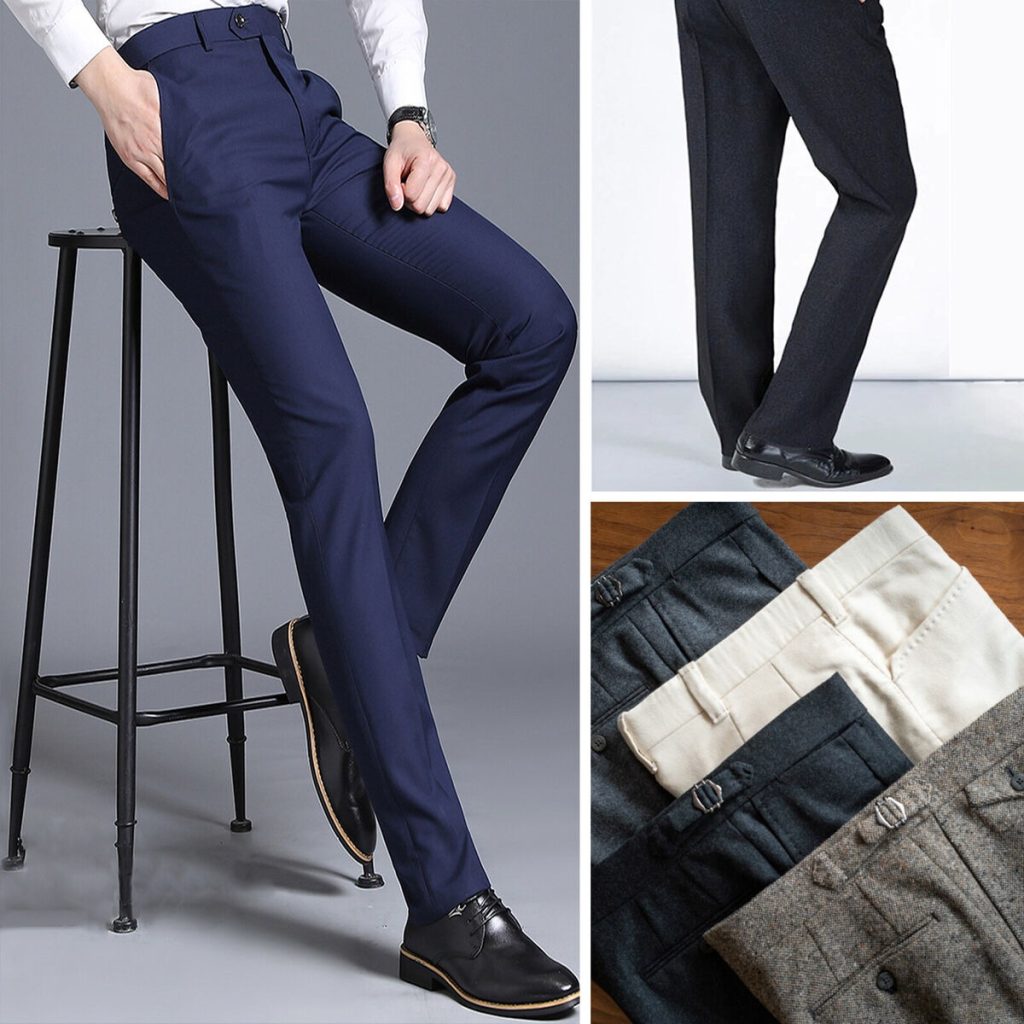
Wool Suit Pants
Wool is a delicate fabric that demands care. Set your iron to a medium-warm setting. If your iron has fabric settings, choose the one marked ‘wool’. Always use a pressing cloth to prevent shine and scorch marks. A gentle steam helps eliminate wrinkles without harming the fibers.
Cotton and Linen Suit Pants
Cotton and linen can withstand higher temperatures. However, be cautious. Start with a medium setting and increase heat if necessary. Use steam liberally to smooth out deep creases. A pressing cloth is not essential but can help avoid accidental marks.
Synthetic Fabrics
Synthetic materials like polyester or rayon need low heat. High temperatures can melt or warp these fibers. Use a pressing cloth and minimal steam. If your iron has a ‘synthetic’ setting, use it to safeguard your pants. It’s always better to iron synthetics too cool than too hot, to prevent irreversible damage.
Step-by-Step Guide to Ironing Suit Pants
Ironing suit pants can seem tricky, but it doesn’t have to be. Follow this step-by-step guide to ensure your suit pants look sharp and well-pressed. This process applies the how to iron suit pants techniques you have just learned.
Position the Pants Correctly
Start by laying the pants flat on the ironing board. Align the seams and make sure the fabric is smooth. The waist should hang off the board’s narrow end. This allows you to rotate the pants easily as you iron.
Iron the Waistband and Pockets
Heat up your iron to the right temperature for the fabric. Begin with the waistband. Move the iron gently across, applying slight pressure. Next, iron the pockets from the inside out. This helps keep the pocket linings flat and neat.
Move to the Legs and Creases
Once the top parts are done, move to the legs. Lay one leg at a time on the board. Start from the top and work your way down. Iron around pleats and pockets with care. Next, create a sharp crease by folding the pants along the seams. Gently press the iron down along the fold line. Flip and repeat on the other leg.
Avoiding Common Ironing Mistakes
To prevent ruining your suit pants, be aware of common ironing mistakes and how to avoid them. Ironing is an art and mastering it can save your pants from various mishaps.
Overheating and Scorching
One of the easiest errors is using too much heat. Even with a pressing cloth, too much heat can scorch fabric. To avoid this:
- Check your iron’s temperature before you start.
- Test a small, hidden area first.
- Never leave the iron stationary on the fabric.
An overheated iron can damage fibers beyond repair, so be cautious and use just the right setting.
Leaving Shiny Marks
Shiny marks happen when direct heat is too high for too long. Protect your suit pants:
- Use a pressing cloth always.
- Keep the iron moving constantly.
- Lower the temperature if shine starts to appear.
A pressing cloth serves as a barrier, preventing the iron from making direct contact with the fabric.
Maintaining a Perfect Crease
The goal of ironing suit pants is to keep creases sharp. Here’s how:
- Fold the pants along the seam accurately.
- Apply gentle pressure with the iron on the crease.
- Avoid sliding the iron back and forth over the crease.
By ensuring a crease is well-defined and crisp, your suit pants will maintain a professional look.
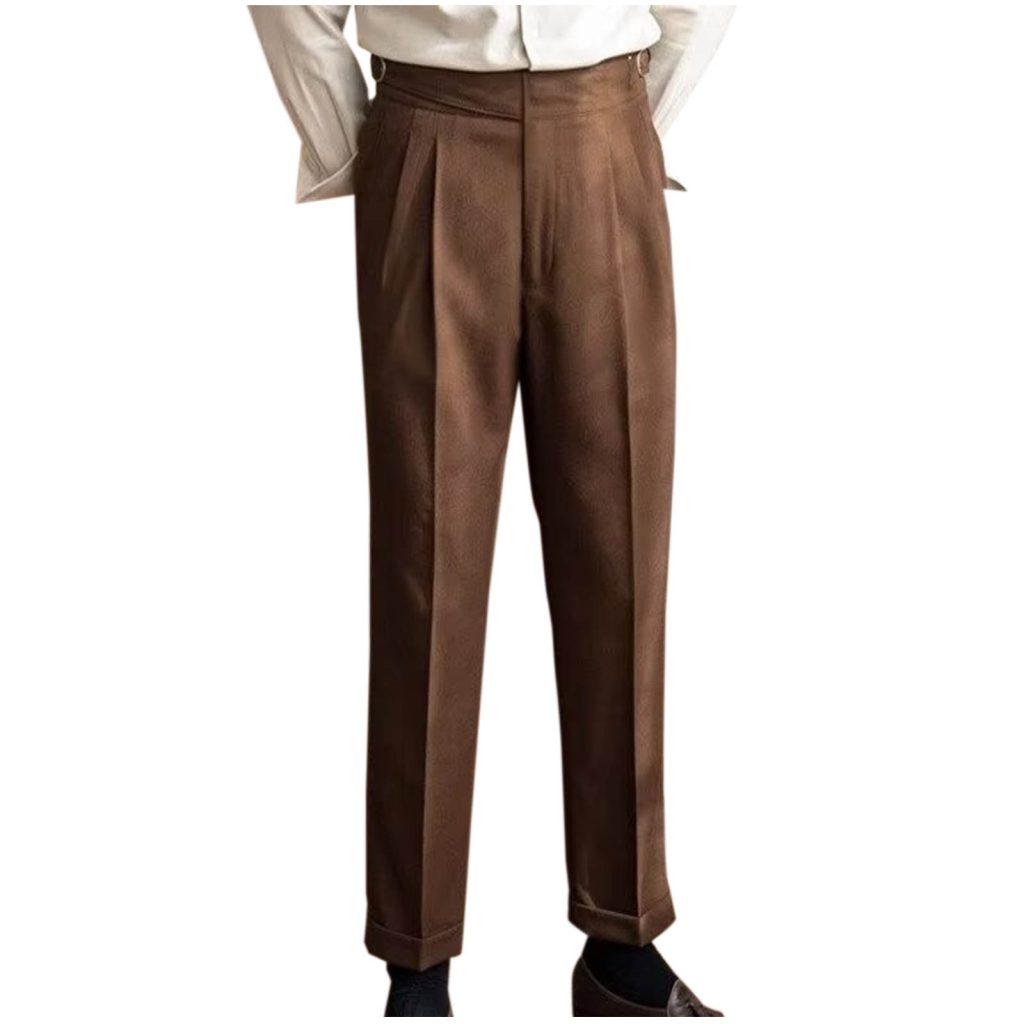
Tips for Ironing Suit Pants Efficiently
Ironing suit pants doesn’t just stop at knowing how to iron suit pants; efficiency is key. Remember these tips to ensure you’re ironing your suit pants in the best way possible.
Using Steam and Water Sprays
Using steam can make a big difference when ironing. If your suit pants have stubborn wrinkles, steam them first. A steam iron is best for this. If you don’t have one, use a water spray bottle. Mist the fabric lightly before ironing. This helps the heat smooth out wrinkles quickly. Don’t soak the pants – a light mist is all you need. Steam and a pressing cloth work together to protect the fabric while eliminating creases.
Remember to empty the iron’s water reservoir when done. This prevents drips and mineral deposits later.
Folding Techniques for Storage
Once you’ve ironed your suit pants, fold them properly to avoid new wrinkles. Lay the pants flat. Fold them along the seams to maintain the crease. For hanging, use a clamp hanger and clamp the pants by the bottom hem. This lets the weight of the pants keep the creases sharp.
For drawers, fold the pants in thirds. Start by bringing the hem up to the waistband. Then fold them over one more time. This method prevents crease loss and saves space.
Caring for Your Suit Pants After Ironing
After mastering how to iron suit pants, proper care ensures their longevity and appearance. The final step of ironing is just as crucial as the preparation and process.
Proper Hanging and Storage
Once your suit pants are ironed, hang them correctly to keep wrinkles at bay. Use these tips:
- Use a wooden hanger with a wide bar for the waistband.
- Hang pants by the waistband or cuffs, depending on the hanger type.
- If hanging by cuffs, ensure the pants hang straight.
- For folded storage, fold pants along the seams to preserve creases.
- Store ironed pants in a dry, cool place away from direct sunlight.
By hanging or folding your suit pants correctly, you maintain the crispness achieved through ironing. This significantly reduces your need to re-iron before each wear.
When to Dry Clean Instead of Iron
Sometimes, dry cleaning is a better choice for your suit pants, especially when:
- The label advises against ironing.
- Stains are too tough for at-home treatment.
- The fabric has a special finish that could be damaged by ironing.
Choose dry cleaning for delicate materials or when you’re unsure of the correct ironing technique. This method cleans and presses your pants without risking damage. In between dry cleanings, you can often just steam and hang your pants to freshen them up.
